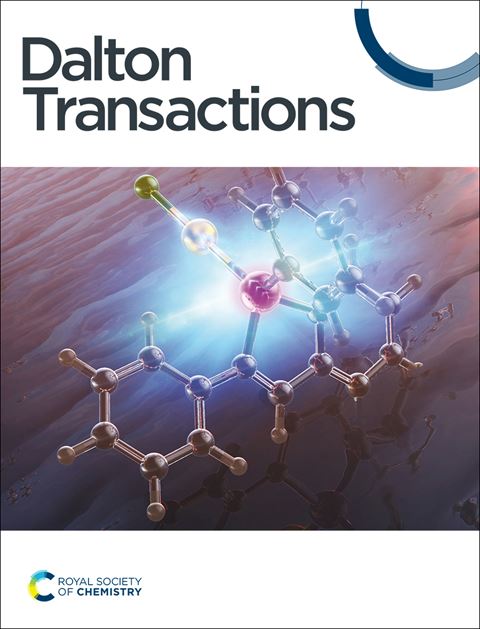Relationship between molecular structures and thermogravimetric properties of gallium-amidinate based compounds
IF 3.5
3区 化学
Q2 CHEMISTRY, INORGANIC & NUCLEAR
引用次数: 0
Abstract
The ability to predict the thermal properties of molecular compounds is essential for their successful integration into vapor-phase processes such as atomic layer deposition (ALD) and chemical vapor deposition (CVD), as well as in catalysis and materials synthesis. In this work, we present a systematic study of 24 gallium amidinate complexes, designed to explore the relationship between molecular structure and thermal behavior. The series encompasses a range of structural variations: different ligand substituents, molecular symmetry, and co-ligands. Structural characterization, including in some cases single-crystal X-ray diffraction, was combined with detailed thermal analysis using thermogravimetric analysis (TGA) and differential scanning calorimetry (DSC) under both atmospheric and reduced pressure conditions. The results reveal clear correlations between thermal properties and ligand architecture, with features such as alkyl chain type, methyl group presence, and overall symmetry playing key roles in determining volatility and stability. Importantly, both symmetric and dissymmetric complexes were found to possess the desired thermal characteristics for vapor-phase deposition processes. Beyond offering valuable design principles for gallium precursors, the dataset generated herein provides a foundation for improving predictive models—empirical and AI-driven alike—towards the rational development of next-generation functional molecular compounds.氨基酸镓基化合物的分子结构与热重性质的关系
预测分子化合物的热性质的能力对于它们成功地整合到气相过程(如原子层沉积(ALD)和化学气相沉积(CVD))以及催化和材料合成中至关重要。在这项工作中,我们提出了24个酰胺酸镓配合物的系统研究,旨在探索分子结构和热行为之间的关系。该系列包括一系列的结构变化:不同的配体取代基,分子对称和共配体。在大气和减压条件下,结构表征,包括某些情况下的单晶x射线衍射,与使用热重分析(TGA)和差示扫描量热法(DSC)的详细热分析相结合。结果表明,配体结构与热性能之间存在明显的相关性,其中烷基链类型、甲基存在和整体对称性等特征在决定挥发性和稳定性方面起着关键作用。重要的是,发现对称和非对称配合物都具有气相沉积过程所需的热特性。除了为镓前体提供有价值的设计原则外,本文生成的数据集还为改进预测模型(经验模型和人工智能驱动模型)为下一代功能分子化合物的合理开发奠定了基础。
本文章由计算机程序翻译,如有差异,请以英文原文为准。
求助全文
约1分钟内获得全文
求助全文
来源期刊

Dalton Transactions
化学-无机化学与核化学
CiteScore
6.60
自引率
7.50%
发文量
1832
审稿时长
1.5 months
期刊介绍:
Dalton Transactions is a journal for all areas of inorganic chemistry, which encompasses the organometallic, bioinorganic and materials chemistry of the elements, with applications including synthesis, catalysis, energy conversion/storage, electrical devices and medicine. Dalton Transactions welcomes high-quality, original submissions in all of these areas and more, where the advancement of knowledge in inorganic chemistry is significant.
 求助内容:
求助内容: 应助结果提醒方式:
应助结果提醒方式:


